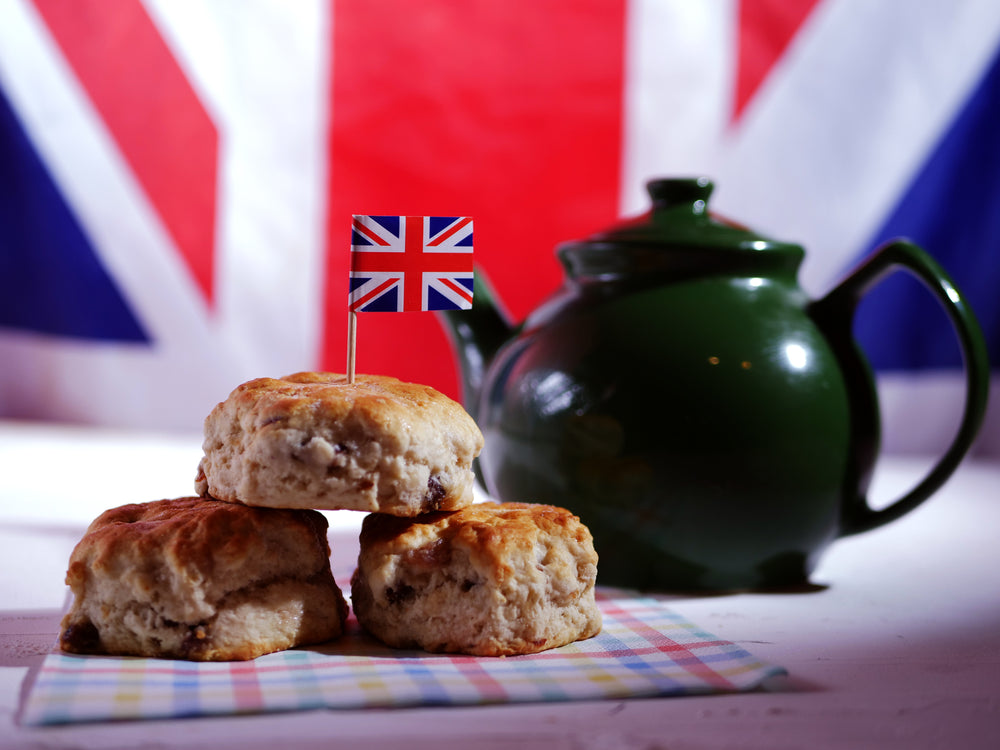Ask a tea person about teapots, and you will hear every individual delightfully embarking on a long and passionate discussion about how a specific design or color, or shape is better than the others. There is no ‘one best teapot’ in the world, just like there is no ‘one best tea’. So, when we were asked by a customer what is the best teapot, we really did find ourselves leaning towards our own favorites. Everyone had a different teapot in mind.
Some preferred intricate designs on the teapots, and some displayed a distinct slant for basic colors. Some felt that bone china teapots made a difference in the taste of the tea, and some felt that ceramic teapots made no difference. Some loved unique designs like cubed teapots, while others preferred the timeless round teapots. In the end, a majority of us, tea lovers, found the Sadler teapots to be quite a great pick. To own a Sadler teapot was so much like owning a small piece of British history.
What is a Sadler teapot?
In 1882, James Sadler established a pottery manufacturing facility in Burslem, Stoke-on-Trent, United Kingdom. His company specialized in making Brown Betty teapots. During this period, tea was Britain's favourite beverage, and almost every home in the country, big or small, had a teapot. The castles and mansions in Britain could afford premium bone china, but in the average home, Brown Betty teapots were a common sight; the Sadler teapots were synonymous to good quality and good taste.
James Sadler became one of the most popular manufacturers of the Brown Betty teapots. Soon, his company was manufacturing novelty shapes and had as his name grew among tea lovers in the country, Sadler moved away from the Brown Betty style to the more classy white earthenware glazed teapots.
For over a century, Sadler teapots enjoyed unencumbered success and growth. But the company slowly started to decline towards the onset of the 21st century and in April 2000, the company went into receivership. Rights to use the company’s brand name were acquired by Churchill China.
This makes Sadler teapots a novelty for modern-day teapot collectors. Some of the designs like the Dainty Miss, Sophie Chintz and the Courting Couples are absolutely stunning. Others like the gold and white swirls design are simpler yet captivating. The oldest and most collectible pattern among the Sadler teapots is the Blue Willow collection.
Churchill China continues to manufacture many of the Sadler teapot patterns since its acquisition.
What is a Brown Betty teapot?Brown Betty teapots are round teapots, brown in colour. The brown colour comes from the Manganese brown glaze, which is also known as the Rockingham glaze. Originally the Brown Betty teapots were made with red clay, which was discovered in Stoke-on-Trent in 1695. There is no special history talking about how these teapots got their name, but we know the brown comes from the colour of the glaze used in these pots. Teapots made from this clay retained heat for a longer period.
The early designs of Brown Betty teapots resembled coffee pots because they were much taller. Towards the nineteenth century, the pots gained a rounder shape. This round shape of the pot allowed the tea leaves to swirl more freely, releasing more flavour. Generations of Englishwomen agree that tea brewed in the Brown Betty teapot has an excellent taste that remains incomparable.
Another advantage of using the Brown Betty teapot was that the ark colour of the pot did not show tea stains over time. Housewives often preferred low staining to maintain a look of cleanliness as they practiced their daily tea rituals.
Brown Betty is not a brand but a design, so you will find many potters in history who have specialized in making this type of teapot. Two companies in England that still make the Brown Betty teapots are Cauldon Ceramics, Ltd. and Adderley Ceramics, Ltd. Many antique shops sell teapots made by the older manufacturers like Sadler, Alcock, Lindley, and Bloore.
How do I recognize a Brown Betty teapot?Recognizing a Brown Betty is as easy as finding one. Some foreign companies have lately started designing their teapots like the Brown Betty, but they still don't have the distinctive red clay that gives the teapot a distinctive characteristic of brewing awesome teas. Some of the best ways to check if your teapot is an original Brown Betty are:
- It will say ‘Made in England’ or ‘Original’ or will have the name of the manufacturer like ‘Cauldon Pottery’ on the underside of the pot.
- Many of them are also shipped with a Union Jack sticker on the teapot body.
- When you turn the pot upside down, there will be an unglazed ring that displays the red clay sourced from the Stoke-on-Trent region used in making original Brown Betty teapots.
What are the different types of teapot material?
- Ceramic and porcelain are common materials used for making teapots in Britain.
- Glass teapots are favoured by those who brew green, floral, and lighter coloured teas.
- Stoneware teapots are also good for brewing all kinds of teas.
- Stainless steel teapots are preferred by those who want a no-maintenance teapot that can be washed in the dishwasher.
British teapots are mostly available in sizes based on the number of cups of tea it can brew. A 2 cup teapot will be small for a family of tea lovers, while a 4 cup teapot may be too big for an individual, especially if you are just taking a small tea break and don't want to brew a large pot of tea.
In a teacupIf you are just starting off with your teapot collection, then it may take some time to find a favorite that you would end up using more often than the others. Usually, this is the design and style that you will end up vouching for as the best teapot available. For those who are looking for a special connection to Britain, a Brown Betty could be a perfect piece of crockery to invest in. After all, an original Brown Betty could come from nowhere else other than the Stoke-on-Trent region because of the unique red clay.


 Easter 2026
Easter 2026
 Frozen Food
Frozen Food
 Baking
Baking
 Beans, Peas, Soups & Tins
Beans, Peas, Soups & Tins
 Biscuits, Crackers & Cookies
Biscuits, Crackers & Cookies
 Candy / Sweets
Candy / Sweets
 Crisps & Snacks
Crisps & Snacks
 Chemist / Pharmacy
Chemist / Pharmacy
 Desserts
Desserts
 Gravy, Stock & Paste
Gravy, Stock & Paste
 Haggis
Haggis
 Indian Sauces, Paste and Pickle
Indian Sauces, Paste and Pickle
 Jams & Preserves
Jams & Preserves
 Poppy Appeal
Poppy Appeal
 Pot Noodles & Super Noodles
Pot Noodles & Super Noodles
 Scone Mix
Scone Mix
 Gluten-Free / Free From
Gluten-Free / Free From
 Tea Accessories
Tea Accessories
 Teapot & Tea sets
Teapot & Tea sets
 Tea For One
Tea For One
 Sugar & Creamer
Sugar & Creamer
 Tableware
Tableware
 Serveware
Serveware
 Plates & Trays
Plates & Trays
 Bowls
Bowls
 Cups & Saucers
Cups & Saucers
 Mugs
Mugs
 Silverware
Silverware
 Dinnerware - Accessories
Dinnerware - Accessories
 Dinnerware - For Pets
Dinnerware - For Pets
 Victoria Eggs - Hand-Drawn UK Homeware
Victoria Eggs - Hand-Drawn UK Homeware
 Jewelry & Accessories
Jewelry & Accessories
 Sale
Sale
 Christmas Gifts
Christmas Gifts

